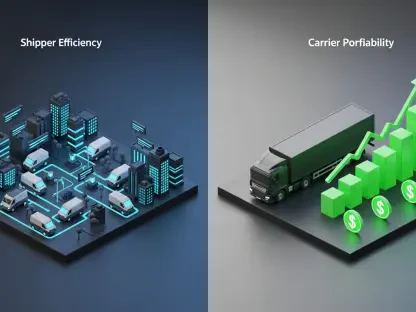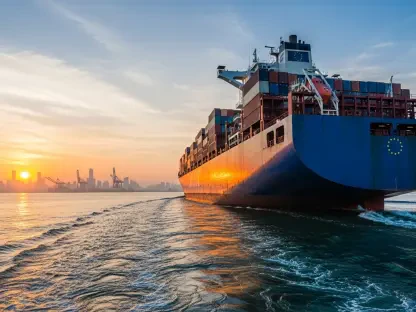With decades of experience in management consulting, Marco Gaietti is well-regarded for his deep insights into business management, particularly within strategic management, operations, and customer relations. As logistics has evolved beyond mere transportation, Marco brings a wealth of knowledge to understanding this shift towards value-added services in the sector. In this interview, we delve into the transformation of logistics, the increasing demand for flexibility and sustainability, and the strategic importance of integrating logistics within broader business functions.
Can you describe the evolution of the logistics sector from its traditional roles to its current focus on value-added services? What does this shift mean for the supply chain process as a whole?
Logistics has traditionally been about moving and storing goods efficiently, but nowadays, it’s far more complex and integral to the supply chain. We see logistics providing value-added services like co-packing, kitting, and sustainable packaging solutions—all aimed at enhancing the consumer experience and meeting business goals. This shift signifies a structural change in supply chains, where logistics providers aren’t just facilitators; they’re strategic partners helping brands to adapt quickly to market pressures, consumer expectations, and environmental responsibilities.
How have consumer demands for customized products impacted logistics operations? Can you give specific examples of how logistics companies are being more agile in their operations today?
Consumer expectations for customization have revolutionized logistics operations. Now, logistics must be incredibly flexible to manage volatile demand and shorter lead times. Companies are adopting more agile practices, such as real-time adjustments in production schedules and inventory management. For instance, Kinaxia Logistics assisted a major client in transitioning from plastic to cardboard packaging by designing custom jigs. This showcases how technical expertise in logistics can accommodate specific product needs swiftly, demonstrating agility within the process.
How significant is the role of logistics providers in maintaining product quality and brand reputation? Could you share an example or two of logistics companies that have successfully implemented quality control measures?
Logistics providers are essential in maintaining product quality and brand reputation. They’re tasked with quality assurance processes to ensure products meet customer and retailer standards. A notable example is Kammac’s effort in QCing soft furnishing products by inspecting items for issues like loose threads. This initiative safeguarded both product integrity and the retailer’s brand reputation. Similarly, Charles Kendall Freight managed a fulfillment solution maintaining high precision in packing operations, further illustrating the critical role of logistics in quality control.
Why is sustainability now a core focus for logistics providers? Can you discuss specific strategies or innovations that logistics companies have implemented to meet environmental goals?
Sustainability has become a pressing concern due to rising consumer expectations for greener products and sustainable supply chains. Logistics providers have responded by adopting strategies like reducing single-use plastics and enhancing recyclability in packaging materials. GXO set a prime example by eliminating adhesives from labels, opting for water-based applications, and significantly reducing plastic use in Virgin Media O2’s packaging. These approaches not only meet ESG targets but also align logistics operations with global environmental goals.
How are logistics providers integrating their services with contract manufacturing and packing operations? What benefits do clients experience from this seamless approach?
Today’s logistics providers offer integrated solutions that include everything from inbound logistics and warehousing to inventory management and outbound distribution. This seamless approach provides clients with end-to-end efficiency in their supply chains, reducing complexity and improving collaboration across various stages of production and delivery. Kinaxia’s establishment of a national logistics network paired with contract packing operations is an example of such integration. It allows clients to streamline operations under one roof, enhancing speed and flexibility.
How has the relationship between logistics providers and brands shifted from being transactional to strategic? What are some examples of strategic innovations that logistics providers have adopted for staying competitive?
The relationship between logistics providers and brands has evolved into a strategic partnership, where collaboration is essential for mutual success. Providers are now integral to brand strategies, offering insights and solutions to meet complex logistical demands. GXO has embraced shared-user environments and inventory downsizing as ways to remain agile and efficient. These innovations reflect the adaptability that brands require from their logistics partners, beyond mere speed and cost considerations—ensuring alignment with broader business objectives.
As the CEO of the BCMPA, what trends have you observed in the demand for value-added logistics services across different sectors? How is the association supporting its members in adapting to these evolving industry demands?
At BCMPA, we’ve seen a surge in demand for value-added logistics services across sectors like food and drink, beauty, and homewares. Our members are evolving beyond traditional roles, providing comprehensive solutions that handle everything from raw material sourcing to final product delivery. The association supports this transition through workshops, certifications, and networking opportunities that bolster their capabilities. By fostering such growth and adaptability, we empower members to stay competitive and responsive to market needs.
What do you predict will be the next major shift in the logistics industry? How can brands prepare for and leverage these upcoming changes to their advantage?
The next major shift in logistics will likely center around further integration of technology and data analytics to enhance operational precision and predictive capabilities. Brands must prepare by investing in technology that offers real-time insights and by nurturing strategic partnerships with logistics providers who prioritize innovation. By doing so, they can anticipate market trends, optimize supply chain efficiency, and maintain a competitive edge in rapidly changing environments.









